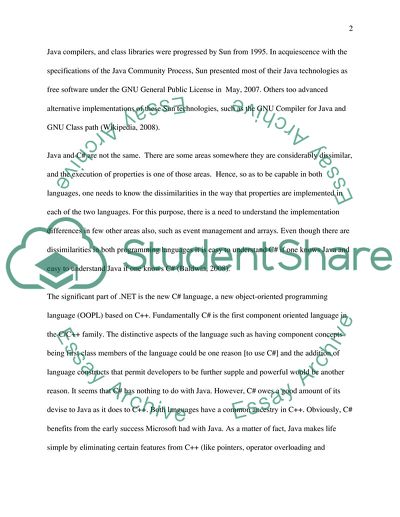Cite this document
(“Critical diference between java and C# Essay Example | Topics and Well Written Essays - 2500 words”, n.d.)
Critical diference between java and C# Essay Example | Topics and Well Written Essays - 2500 words. Retrieved from https://studentshare.org/miscellaneous/1543974-critical-diference-between-java-and-c
Critical diference between java and C# Essay Example | Topics and Well Written Essays - 2500 words. Retrieved from https://studentshare.org/miscellaneous/1543974-critical-diference-between-java-and-c
(Critical Diference Between Java and C# Essay Example | Topics and Well Written Essays - 2500 Words)
Critical Diference Between Java and C# Essay Example | Topics and Well Written Essays - 2500 Words. https://studentshare.org/miscellaneous/1543974-critical-diference-between-java-and-c.
Critical Diference Between Java and C# Essay Example | Topics and Well Written Essays - 2500 Words. https://studentshare.org/miscellaneous/1543974-critical-diference-between-java-and-c.
“Critical Diference Between Java and C# Essay Example | Topics and Well Written Essays - 2500 Words”, n.d. https://studentshare.org/miscellaneous/1543974-critical-diference-between-java-and-c.


